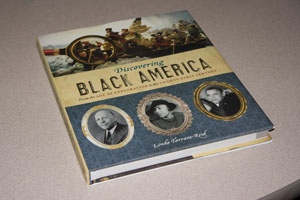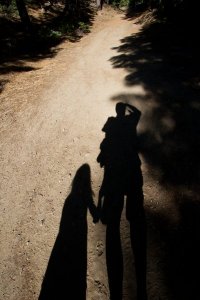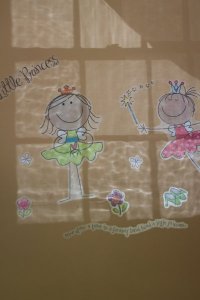Online Magazine
Recent Posts
- Safeguard your Cellphone Photos
- Black & White to Color – Instantly
- Wearing Many Hats
- Video Roundup
- Rescuing Your Blurry Pictures
- Showing Their Age
- What is Your Angle?
- Panorama Photos
- Humorous Photos
- Close Ups
- Fisheye Pictures
- Photo Antiquities
- Printing Big
- Appreciating Scale
- Celebrity Sightings
Tags
More Places to Go
- Free "How-To" Books “How To” books for popular cameras 0
- Vist Us on Facebook keep in touch with us on Facebook 2
Archives
- July 2023 (1)
- March 2023 (2)
- February 2023 (1)
- December 2022 (1)
- October 2022 (1)
- September 2022 (8)
- August 2022 (9)
- July 2022 (1)
- June 2022 (1)
- June 2021 (1)
- May 2021 (1)
- March 2021 (5)
- February 2021 (4)
- January 2021 (2)
- April 2019 (1)
- March 2019 (1)
- February 2019 (1)
- October 2018 (2)
- April 2018 (1)
- March 2018 (4)
- February 2018 (1)
- November 2017 (1)
- August 2017 (1)
- June 2017 (1)
- April 2017 (1)
- March 2017 (5)
- February 2017 (2)
- January 2017 (1)
- October 2016 (1)
- September 2016 (1)
- August 2016 (1)
- July 2016 (1)
- May 2016 (1)
- April 2016 (1)
- March 2016 (2)
- February 2016 (1)
- January 2016 (2)
- December 2015 (1)
- November 2015 (1)
- October 2015 (3)
- April 2015 (1)
- March 2015 (5)
- February 2015 (1)
- January 2015 (4)
- December 2014 (2)
- November 2014 (5)
- October 2014 (2)
- September 2014 (1)
- August 2014 (2)
- July 2014 (1)
- May 2014 (1)
- April 2014 (5)
- March 2014 (5)
- December 2013 (2)
- November 2013 (18)
- October 2013 (1)
- September 2013 (1)
- August 2013 (1)
- July 2013 (1)
- June 2013 (3)
- May 2013 (1)
- April 2013 (2)
- March 2013 (1)
- February 2013 (1)
- January 2013 (1)
- December 2012 (1)
- November 2012 (2)
- October 2012 (2)
- September 2012 (5)
- August 2012 (2)
- July 2012 (1)
- June 2012 (1)
- May 2012 (1)
- April 2012 (4)
- March 2012 (1)
- February 2012 (1)
- January 2012 (3)
- December 2011 (1)
- November 2011 (3)
- October 2011 (1)
- September 2011 (2)
- August 2011 (2)
- June 2011 (3)
- May 2011 (4)
- April 2011 (8)
- March 2011 (8)
- February 2011 (10)
- January 2011 (6)
- December 2010 (11)
- November 2010 (14)
- October 2010 (6)
- September 2010 (12)
- August 2010 (2)
- July 2010 (4)
- June 2010 (3)
- May 2010 (1)
- April 2010 (1)
- March 2010 (2)
- February 2010 (1)
- January 2010 (1)
- December 2009 (1)
- November 2009 (2)
- October 2009 (2)
- September 2009 (1)
- August 2009 (3)
- July 2009 (2)
- June 2009 (1)
- May 2009 (2)
- April 2009 (1)
- March 2009 (2)
- February 2009 (1)
- January 2009 (3)
An “out of my element” book review
02nd September 2012
Discovering Black American
In 1978, we founded our parent company Abacus as a publisher of books and software. So for 35 years I’ve been involved with everything that accompanies the task of books – acquisition, contracts, manuscripts, editing, rewriting, printing, marketing, reviews, etc. The books that we publish are technical books: computing, electronics, aviation. While this gives me some expertise evaluating and reviewing books of this genre, I admittedly lack experience evaluating and reviewing history books.
Consequently, the mini-review that I’m about to give here is not based on my in depth knowledge of the subject matter. Rather it’s based only on my personal interest in this topic. Professionally speaking I’m not qualified to comment on history – but can you cut me some slack when I describe the book’s attractive layout and appearance, riveting content, easy reading, and many fine photographs and illustrations?
And so the author’s narrative continues methodically through the Civil War, the Reconstruction Era, the two World Wars leading up to the contentious Civil Rights movement and onto the surprising election of our first Afro-American President.
Discovering Black America is divided into eight chapters arranged chronologically. Each chapter has several sub-sections. I found the reading to be short and sweet – quite descriptive but without any fluff. I didn’t have any trouble reading a few pages at one sitting and being able to easily pick up from where I left off later. The chapters are generously enhanced by attractive sidebars that provide additional interesting detail. The author somehow manages to apply a matter-of-fact voice to some very depressing and disappointing periods of American history.
Overall, the 240-page hardbound book is printed on high quality stock. The large book is handsome enough to adorn your coffee table, but you’ll be much better served by reading rather than just looking at it. Oh, did I mention the fine photographs and illustrations that abound its pages?
Full disclosure: since I’ve been a Facebook user, I’ve rekindled numerous friendships from the past. One of these is with Linda Tarrant-Reid, the author of Discovering Black America. Since we both graduated from New Rochelle High School (New York) in 1967, you can judge for yourself how far back this “past” extends. Anyway I’d like to commend Linda on the fine work that she’s shared through her book.
Why a review at Stay Focused? Maybe we can attribute it to editorial privilege. While “stay focused” is a term that is commonly used in photography, it is also a phrase that suggests that we don’t become distracted from things that really matter. I’d like to think that understanding the black sub-culture in our country is one of those things that really matter.
For those interested, I bought my copy of Discovering Black America online from Amazon for about $21. I found the book to be well worth its price.
Title: Discovering Black America
Author: Linda Tarrant-Reid
Publisher: Abrams
ISBN: 9 780810 970984
Reviewed by: Arnie Lee
Panoramas the easy way
27th August 2012
Photographically speaking, a panorama is a photograph that encompasses a very wide view. I like panoramas because they reproduce a scene as if I were viewing it live by turning my head from the far left to the far right. I can view the photograph in small ‘chunks’ as I scan the entire image from the left to the right.
In the past, making a panorama was a complicated, multiple step process involving capturing the images and then stitching them together whether it be done chemically in a darkroom or digitally with a computer. I won’t go into details of making panoramas using either of these two “conventional” ways. Instead, I’ll point out the ease with which a feature on certain cameras enables me to easily make panoramas in one step.
For the past two years I’ve been using several Sony Alpha series and NEX series cameras to shoot panoramas. These cameras enjoy a feature called Sweep Panorama. When this feature is chosen, you simultaneously depress the shutter and move the camera in a sweeping fashion to the right. As you do this, the camera captures multiple images of the scene. The camera signals the completion of the sweep by halting the shutter. A few seconds afterward, the panoramic capture appears on the camera’s LCD for your review. Press the PLAY button and the image is displayed from left to right – in video fashion – but is actually a single, still panoramic image.
Above, I explained that the sweeping motion is from left to right. But in fact these Sony cameras let you sweep left to right; right to left; up to down; and down to up. These cameras also capture three dimensional appearing images using 3D Sweep Panorama that can be displayed on certain compatible 3D television sets.
Here’s a few of the panoramas that I’ve taken with various Sony cameras. You can click on each of the images to see a wide view of the panorama.
(more…)
The Shadow Knows
30th August 2011
a case for more activity
This year, summer has been an especially busy time for us. I’m just catching up with some of my tasks including writing these articles. I’ll do my best to keep sharing some of the things I’ve learned having spent so many years with a camera.
We all know that light is the agent that makes photography possible. Most often we spend our time making sure that the light is “perfect” – the right intensity and direction to bring out the essence of our subject.
When light diminished or missing, your camera records the darker areas as shadows.
Here’s a few examples of how I’ve played around with shadows.
We see that lighting (or the lack of lighting) can be used to create neat pictures too. Experimenting with the shadow side of lighting was easy and in my case fun too.
Written by Arnie Lee
« Older Posts — Newer Posts »




